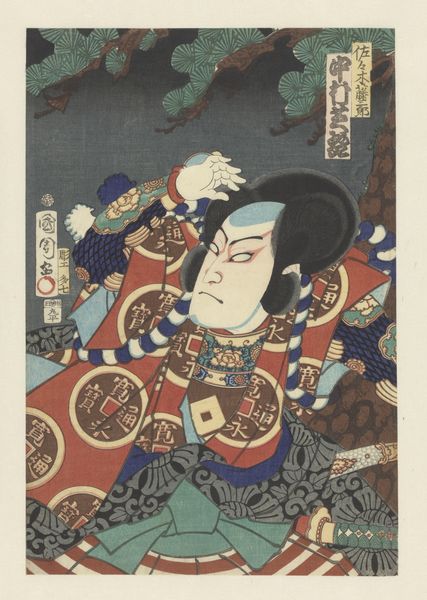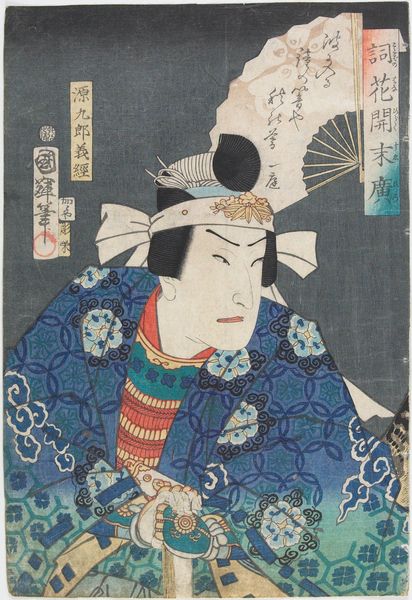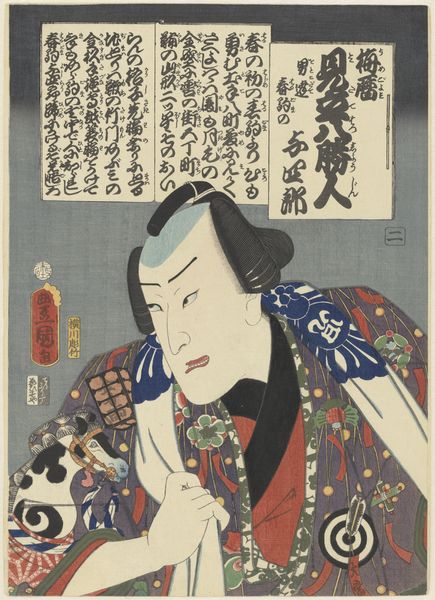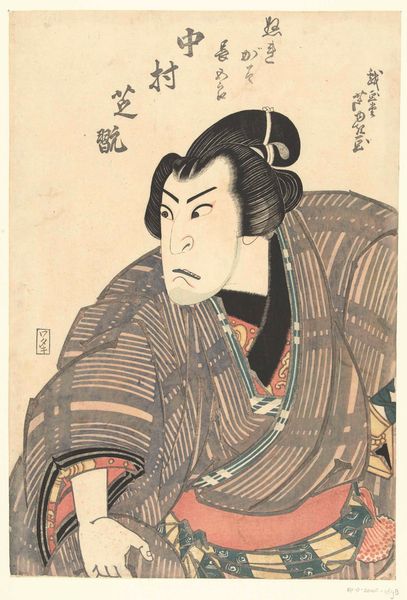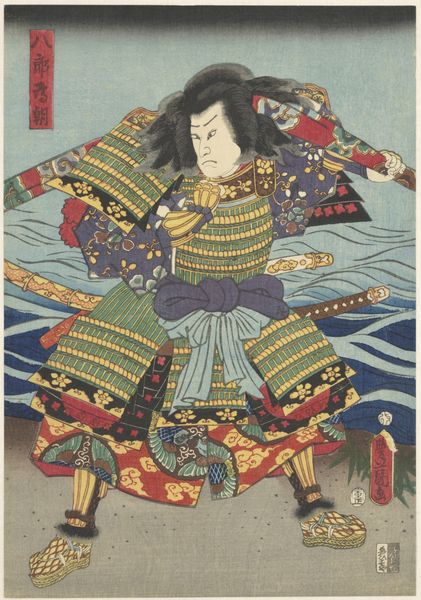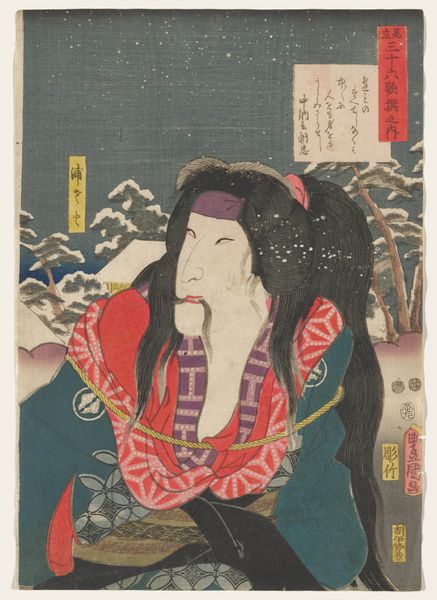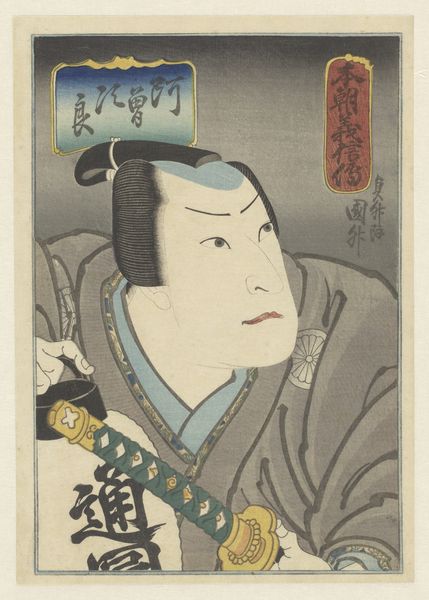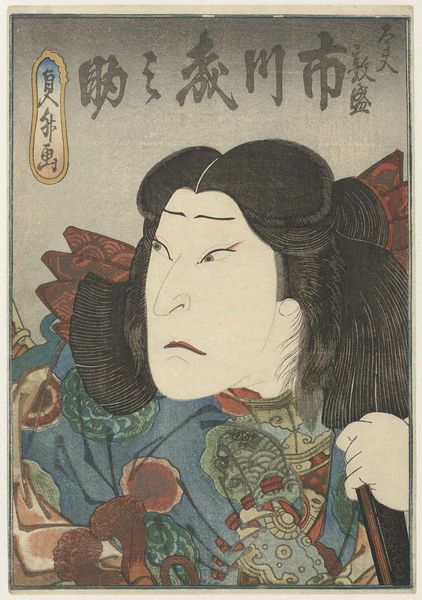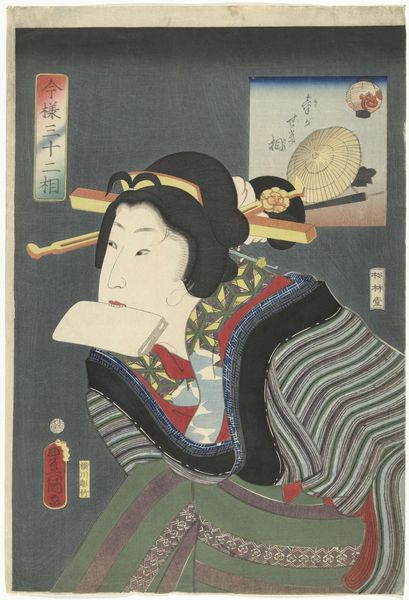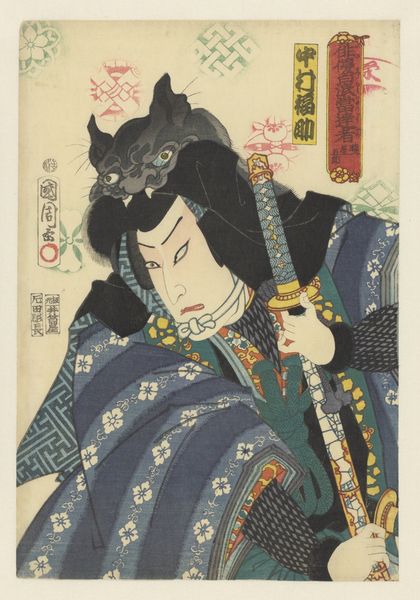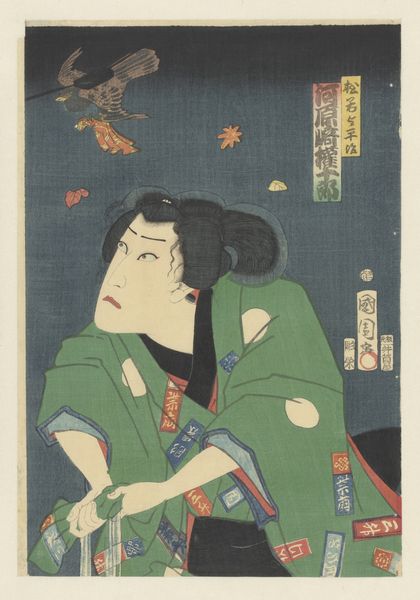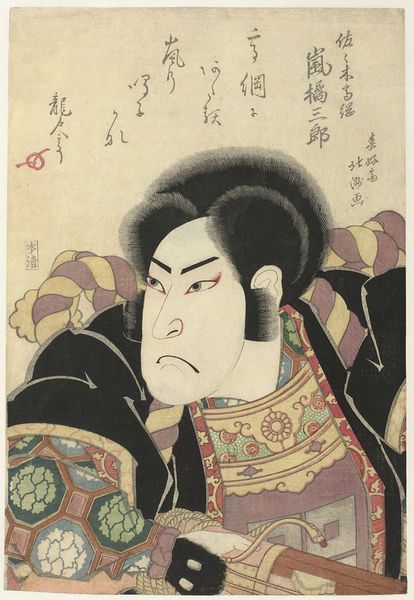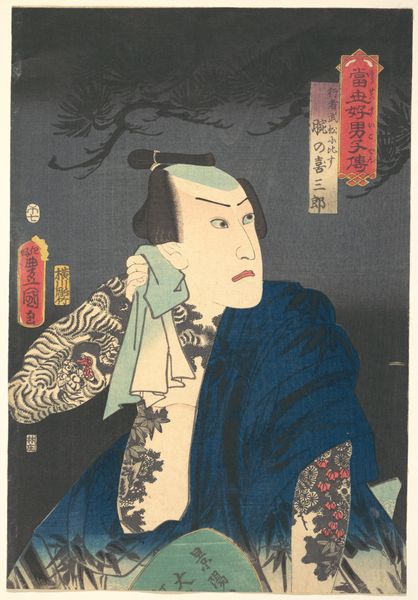
print, woodblock-print
#
portrait
# print
#
asian-art
#
ukiyo-e
#
figuration
#
woodblock-print
#
art nouveau
Dimensions: height 365 mm, width 253 mm
Copyright: Rijks Museum: Open Domain
Curator: Allow me to introduce "Jiraiya en violen", a striking woodblock print crafted in 1862 by Utagawa Kunisada, now residing here at the Rijksmuseum. Editor: Immediately, I'm drawn to the almost graphic simplicity juxtaposed with the incredible detail in the robe patterns and the character’s expression. The flatness contributes a kind of immediacy; it's captivating. Curator: Indeed, that's characteristic of Ukiyo-e, a genre reflecting the ephemeral pleasures of urban life in Edo period Japan. Kunisada was a master of this form, particularly known for his actor portraits and depictions of popular tales. Editor: And in this case, he’s presenting us with Jiraiya, surrounded by these symbolic violins. Note how the colour choices, dominated by reds and blues, lend the piece a dramatic quality and serve to concentrate attention on the face. The face is wonderfully rendered, the subtle details really giving a sense of weight to the work. Curator: Precisely. Jiraiya himself is a legendary ninja, often associated with wealth and prosperity, suggested here by the pot overflowing with coins. The violins are integrated to the textual sections that were created within the design. One must also acknowledge the Art Nouveau feel the piece displays. The composition itself is a complex arrangement of linear elements and textured planes. The arrangement directs our attention to the subject's commanding presence and creates a visual depth that belies the print’s inherently flat nature. Editor: The Ukiyo-e prints, which were mass-produced, had an enormous influence, moving beyond the local culture, of contemporary art. You can really start to understand why when viewing prints like these and understanding how bold some of the designs are. The image hints at the tales that spread in Edo period Japan. Kunisada wasn't just documenting stories, but actively participating in constructing cultural icons. Curator: Yes, that's the brilliance of Kunisada—he doesn’t merely depict; he interprets and amplifies, leaving us with an image imbued with narrative richness and symbolic weight. Editor: Ultimately, beyond the story and its social roots, I appreciate how the formal interplay between the flat planes and intricate details produces such a striking visual statement.
Comments
No comments
Be the first to comment and join the conversation on the ultimate creative platform.
